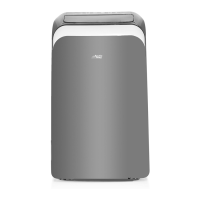
Do you have a question about the Arctic King WPPD08CW0N and is the answer not in the manual?
| Type | Portable Air Conditioner |
|---|---|
| Cooling Capacity | 8000 BTU |
| Coverage Area | up to 350 sq. ft. |
| Voltage | 115V |
| Control Type | Electronic |
| Fan Speeds | 3 |
| Refrigerant | R410A |
| Weight | 47.4 lbs |
| Power Supply | 115V/60Hz |
| Noise Level (High) | 54 dB |
| Operating Temperature (Cooling) | 64-90°F |
Explains symbols indicating potential hazards like death, injury, or fire.
Details precautions for safe installation, including grounding and outlet usage.
Advises against use in wet rooms, near gas, with children, or during thunderstorms.
Covers handling by children, cord safety, cleaning, and battery handling.
Addresses warnings related to R32 refrigerant, ignition sources, and disposal.
Stresses the importance of reading the manual for safe operation and reference.
Identifies front and rear components of the unit for preparation and reference.
Notes design changes and lists unit temperature operating ranges for different modes.
Provides guidance on when to install or remove the exhaust hose based on mode.
Details buttons like SWING, TIMER, MODE, TEMP, FAN, SLEEP, and POWER.
Describes the purpose and operation of each control panel button.
Explains the LED display, error codes (E1-E4), and protection codes (P1).
Guides on initiating and managing the wireless connection for smart features.
Instructions for setting temperature and fan speed in various operating modes.
Explains FAN mode and setting Auto ON/OFF timers for operation.
Describes the energy-saving Sleep/ECO mode and its functionality.
Using the remote as a thermostat for precise temperature control at its location.
Details the auto-restart feature after power outages and a 3-minute wait period.
Covers louver adjustment and continuous water drainage setup.
Instructions for draining during heat pump mode, including hose connection.
Provides tips for secure hose installation to prevent leaks and ensure water flow.
Explains the P1 error code for a full water tray and how to resolve it.
Requirements for selecting an installation site, including clearance and surface.
Visual guide for recommended installation setup and notes on gases.
Lists necessary tools like screwdrivers, tape measure, and knife.
Details the parts included in the window installation kit.
Steps to assemble the exhaust hose with window slider and unit adaptors.
How to connect the exhaust hose assembly to the air conditioner unit.
Instructions for adjusting the window slider size using bolts.
Step-by-step guide for installing in a hung window using foam seals and slider.
Step-by-step guide for installing in a sliding window using foam seals and slider.
Important reminders about hose placement and avoiding obstacles for proper function.
Advises unplugging the unit and avoiding liquids/chemicals during cleaning.
Instructions on how to remove, clean, and maintain the air filters.
Guide for cleaning the unit body and steps for storing it when not in use.
A table listing common problems, possible causes, and troubleshooting steps.
Lists model, voltage, range, and environment for the remote.
Explains the purpose of each button on the remote control.
Instructions for opening the remote and inserting AAA batteries correctly.
Tips for battery performance, storage, and proper disposal methods.
Advice on effective remote use, including range and interference.
Explains various indicators on the remote's LED screen like MODE, FAN SPEED, and ECO.
How to adjust the temperature setting using the remote control.
Step-by-step guide for operating the unit in AUTO, COOL, and DRY modes.
Instructions for using the FAN mode and selecting fan speeds.
Steps to operate the unit in HEAT mode, including temperature and fan settings.
How to set the timer for the unit to automatically turn ON.
How to set the timer for the unit to automatically turn OFF.
Guide to setting both Auto ON and Auto OFF timers at the same time.
Explains SLEEP, SWING, and FOLLOW ME features for enhanced comfort and control.
Restoring or saving previous settings for quick access via the remote.
Clarifies that the user manual descriptions prevail over remote illustrations.
Information regarding FCC/IC compliance and interference correction tips.
Details the one-year warranty period and what Midea covers.
Outlines consumer duties and situations not covered by the warranty.
How to obtain warranty service and contact Midea for support.
Information on returning the product within 90 days and warranty coverage thereafter.
Explains why cooling capacity claims may differ from older models due to new test methods.
Advice on selecting the correct air conditioner size based on room square footage and BTU.
Defines SACC as a measure of seasonally adjusted cooling capacity according to DOE.


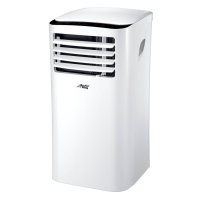
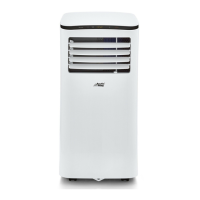


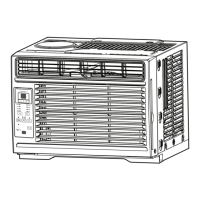
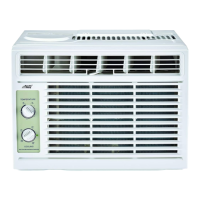



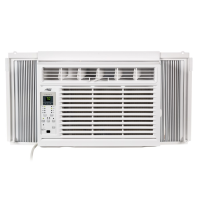
